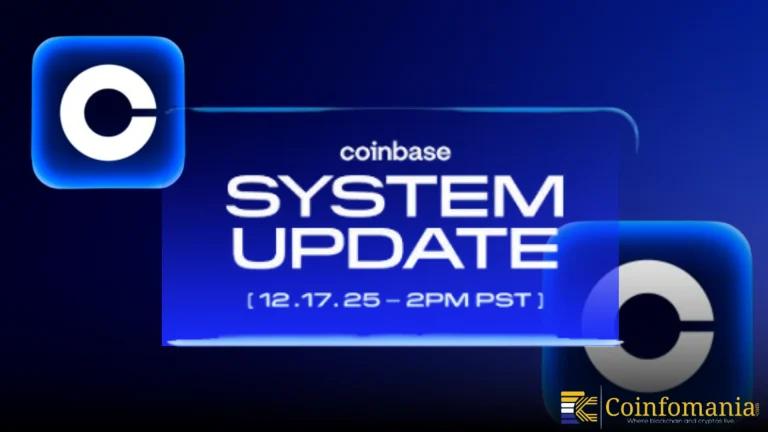SEC Delivers Regulatory Clarity: Stablecoins Not Considered Securities
Brazil’s top court issues a groundbreaking ruling on the legal use of crypto in debt collection—signaling a major shift in how digital assets are treated in financial disputes.

In a major move, the U.S. Securities and Exchange Commission (SEC) has announced that stablecoins that are backed one-to-one by liquid, high-quality assets will not be considered securities. That means the usual registration process will not be required for such stablecoins. This ruling represents a turning point in the regulatory landscape, providing long-needed clarity to investors, financial institutions, and crypto issuers navigating an unpredictable environment. It also indicates a more balanced strategy from the SEC toward digital assets, especially those tied to the U.S. dollar or other fiat currencies.
Regulatory Clarity for a Trillion-Dollar Market
SEC staff issued the clarification on April 4, recognizing that most stablecoins, particularly those that are fully backed by fiat reserves kept in segregated accounts, do not qualify as securities under the Howey Test, the legal standard used to assess investment contracts. In a public statement, the SEC Division of Corporation Finance published its legal view on “Covered Stablecoins,” a type of stablecoin that is backed by real dollars and designed to have a fixed value, in a public release. Cash reserves fully support these fiat-backed digital tokens, ensuring a stable price. The statement read:
“Specifically, this statement addresses stablecoins that are designed to maintain a stable value relative to the United States Dollar, or “USD,” on a one-for-one basis, can be redeemed for USD on a one-for-one basis (i.e., one stablecoin to one USD), and are backed by assets held in a reserve that are considered low-risk and readily liquid with a USD-value that meets or exceeds the redemption value of the stablecoins in circulation. As discussed below, we refer to the types of stablecoins addressed by this statement as “Covered Stablecoins.”
According to the SEC, the primary functions of Covered Stablecoins are money transfers, value storage, and payments. They are not intended to generate earnings, interest, or grant holders any ownership or voting rights. Rather than being referred to as investments, they are frequently called “digital dollars.” Additionally, the SEC clarified that these coins are not advertised as means of generating income, which is crucial in accordance with US securities law. The Reves and Howey tests, two important legal standards, served as the foundation for their ruling.
The SEC stated that according to the Reves test, Covered Stablecoins are primarily employed in everyday transactions and not for profit-making like regular investments. Consumers employ them as a means of payment, rather than to make profits. While applying the Howey test, the SEC further determined that such tokens are not investments, as owners are not anticipating profits from other people’s labor. Rather, they work like electronic money, so they are not considered securities.
The CEO of Coinbase, Brain Armstrong while talking to CNBC, said that he is very “concerned about this idea that consumers cannot get interest on stablecoins.” He further voiced this concern over X (formerly Twitter) that,
“U.S. stablecoin legislation should allow consumers to earn interest on stablecoins. The government shouldn’t put its thumb on the scale to benefit one industry over another. Banks and crypto companies alike should both be allowed to, and incentivized to, share interest with consumers.”
Broader Regulatory Landscape
Since the SEC fell under the leadership that was appointed during President Trump’s presidency, the agency has been moving to specify which crypto operations are outside of its jurisdiction. This has encompassed domains such as memecoins, proof-of-work mining, and now, specific stablecoins. Recently, the SEC’s Division of Corporation Finance issued a statement saying that some fiat-backed stablecoins that are employed solely for payment, money transfers, or storage of value are not securities. The statement read that,
“Persons involved in the process of ‘minting’ (or creating) and redeeming Covered Stablecoins do not need to register those transactions with the Commission under the Securities Act or fall within one of the Securities Act’s exemptions from registration.”
Accordingly, participants in issuing or redeeming these “Covered Stablecoins” do not require registration with the SEC. But the statement—though informal guidance—establishes unambiguous parameters: the tokens have to be entirely backed by quality liquid assets and redeemable for dollars on demand. This would presumably disqualify stablecoins such as Tether (USDT), which keeps reserves in crypto and metal, and perhaps adds strings to redemptions.
Heath Trabet, the president of Circle, wrote on his LinkedIn post, “The SEC just drew a clear line: stablecoins backed one-for-one with high quality liquid assets—like USDC—are NOT securities. This certainty does not extend to other digital assets just because they call themselves “stablecoins.”
Conclusion
The SEC’s decision is an important milestone toward creating more accurate regulations for digital assets. The agency is trying to strike a balance between encouraging innovation and protecting users by separating fully-backed stablecoins from more speculative crypto commodities. The announcement offers useful guidance for stablecoin issuers, financial institutions, and developers working in a rapidly changing space, although it is not legally enforceable. This move proves that the SEC is not afraid to tailor classic finance regulations to the age of technology—albeit not slowing progress—even though there are lingering unresolved issues around algorithmic stablecoins, interest-bearing tokens, and DeFi platforms.
Follow us on Google News
Get the latest crypto insights and updates.
Related Posts

Coinbase Signals Major Global System Update With Simultaneous Worldwide Launch
Triparna Baishnab
Author

Hyperliquid Faces Defining Moment as Governance Vote Targets Massive HYPE Token Burn
Triparna Baishnab
Author

Whale Capitulation Hits ASTER as Large Holder Locks in $667K Loss
Triparna Baishnab
Author